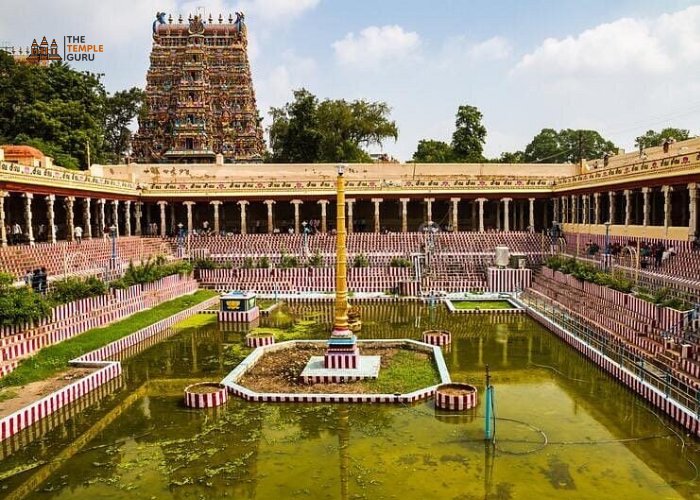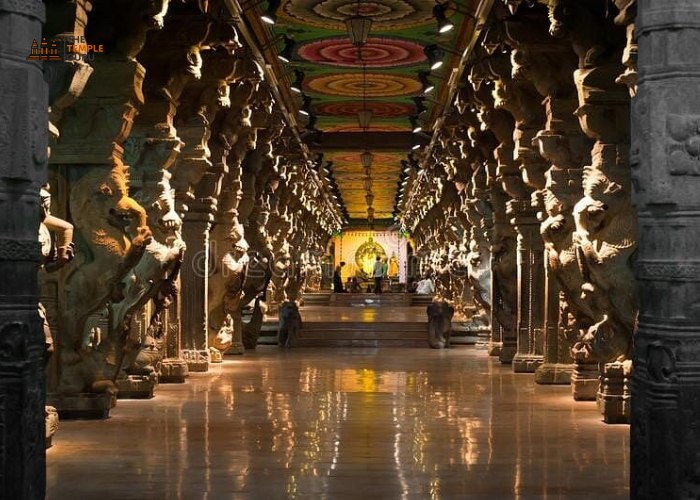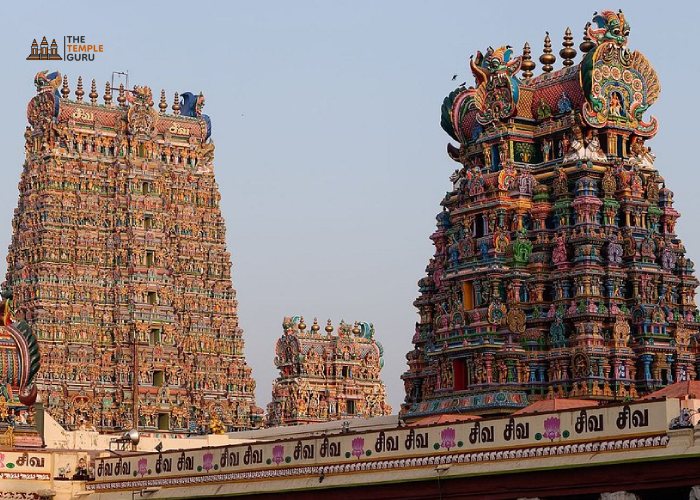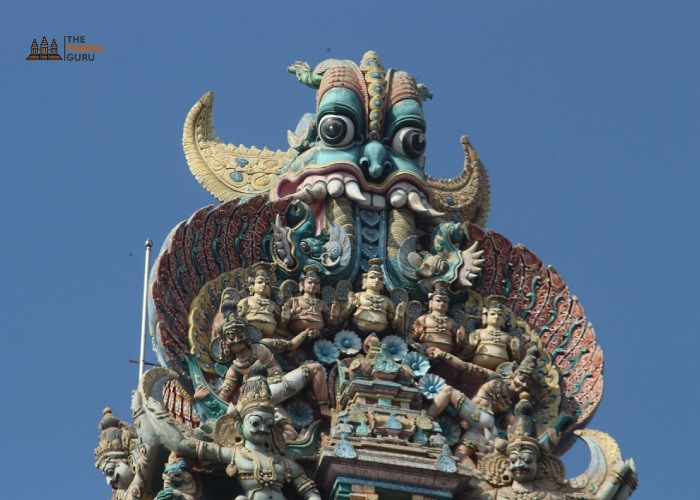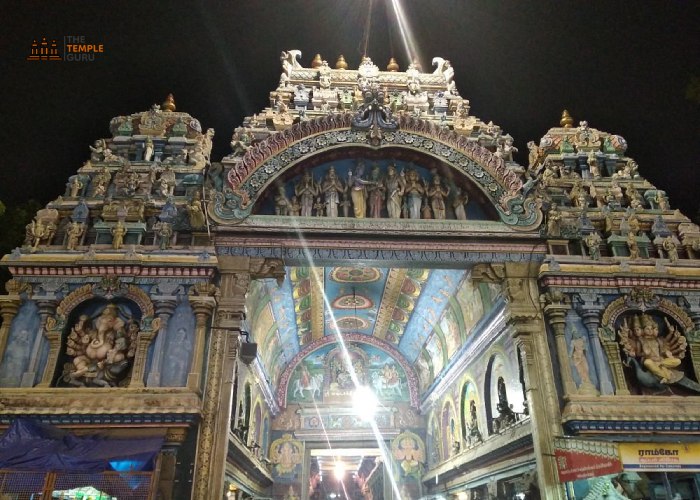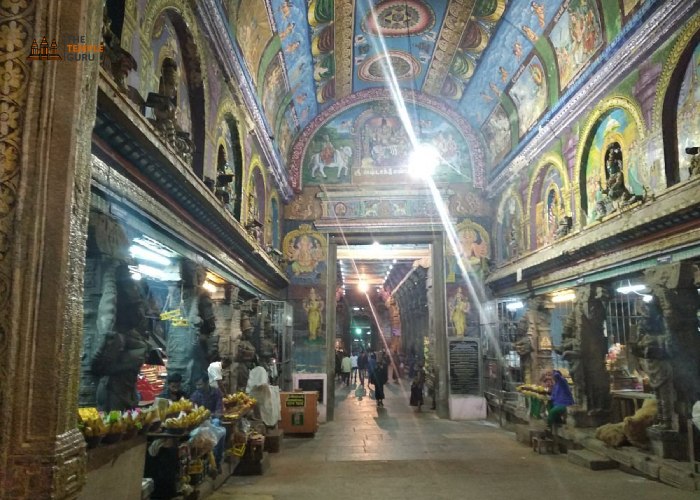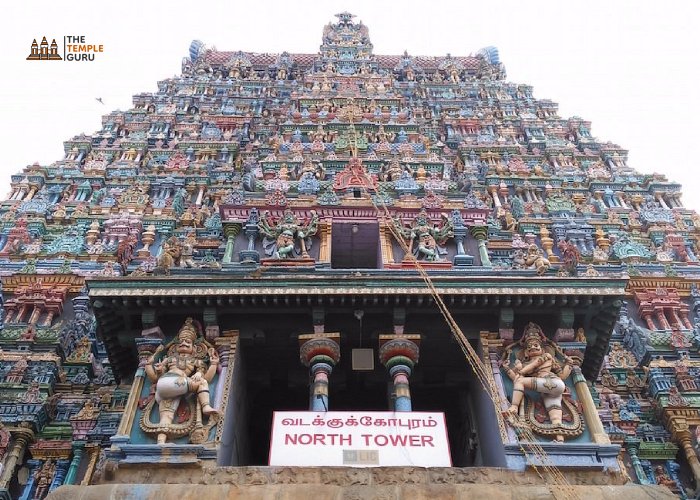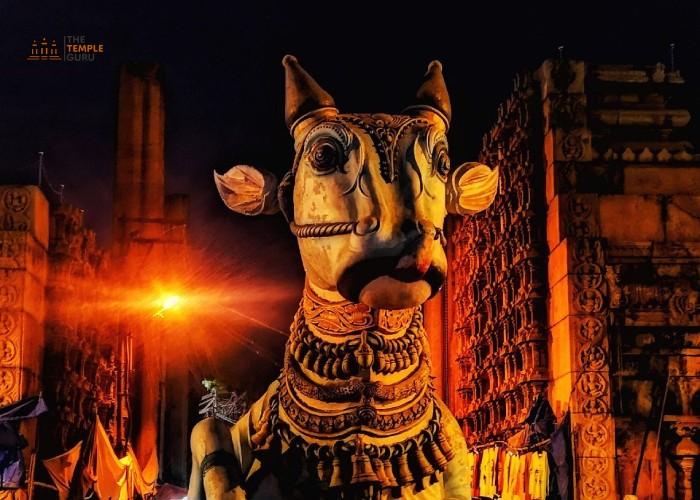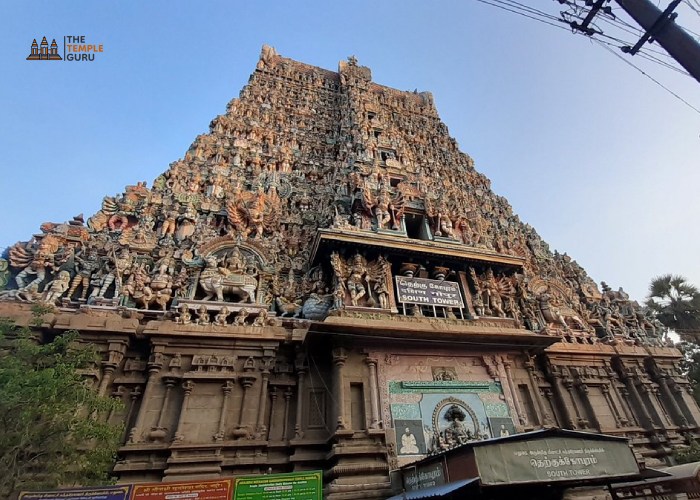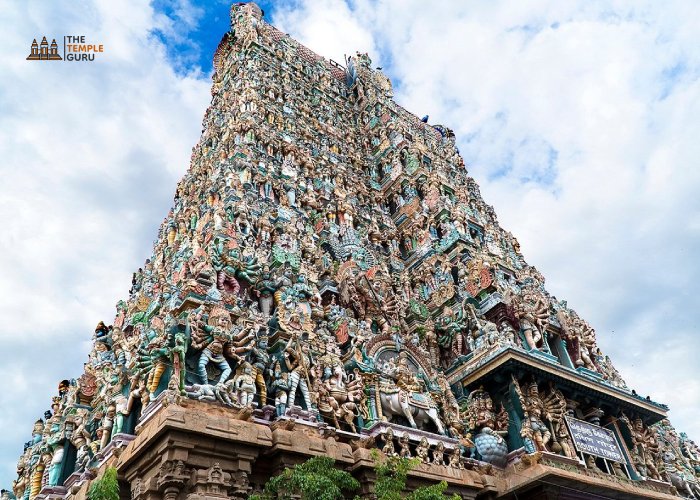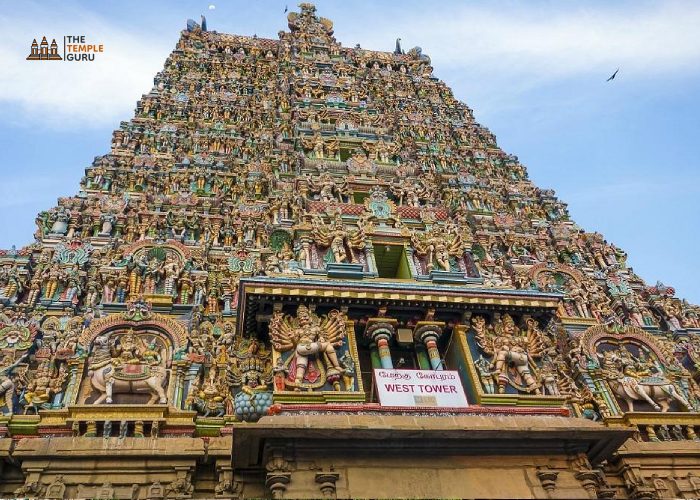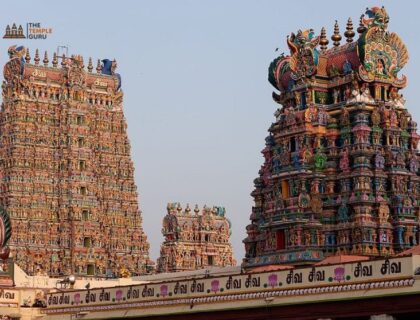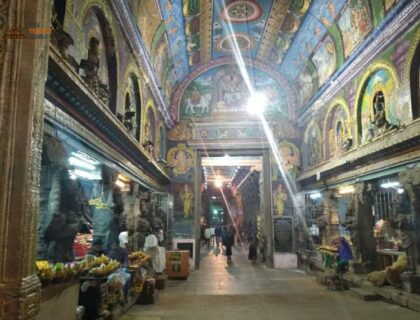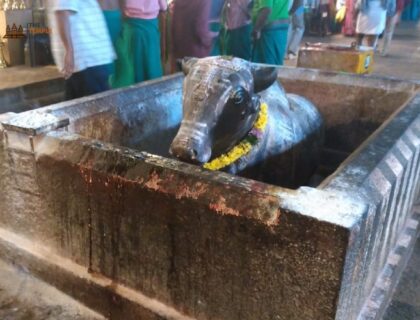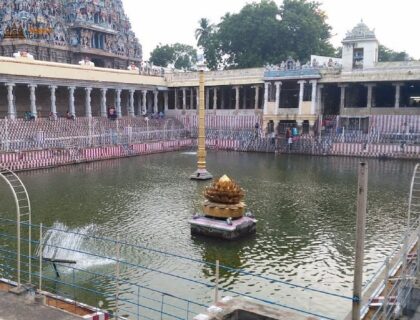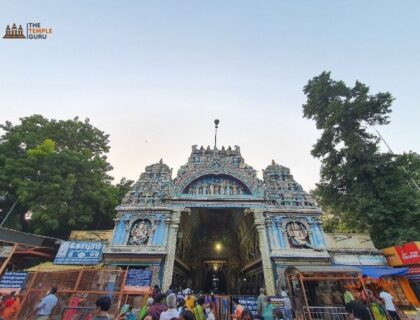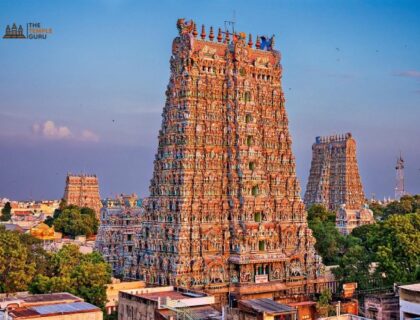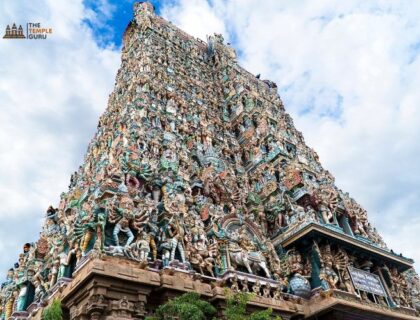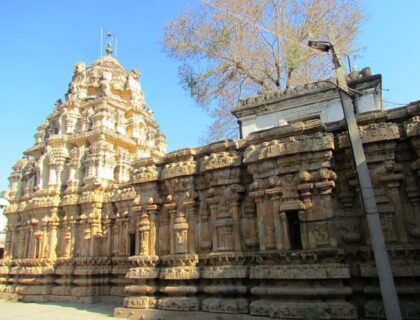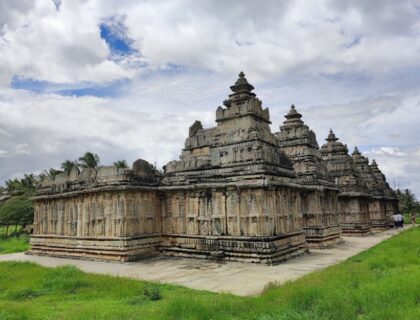Meenakshi Amman Temple
Meenakshi Amman Temple is a historic Hindu temple in Madurai, Tamil Nadu, India, located on the southern bank of the Vaigai River. It is dedicated to the goddess Meenakshi (a Shakti form) and her husband Sundareshwarar (a Shiva form). The temple is located in the heart of Madurai. An ancient temple city mentioned in Tamil Sangam literature, with the goddess temple mentioned in 6th-century CE texts. It is believed that Lord Shiva took the form of Sundareswarar (the handsome one) and married Parvati (Meenakshi) at the current location of the temple.
Meenakshi Amman Temple is one of the Paadal Petra Sthalams, which are 275 Shiva temples revered in Tamil Saiva Nayanar verses from the 6th-9th centuries CE. It is one of the largest and most famous temples in South India and holds immense cultural, religious, and architectural significance. Meenakshi is believed to be an incarnation of Goddess Parvati. This temple is considered one of the most sacred places of Goddess Parvati. The main sanctums house the elaborately decorated and jewelled idols of Goddess Meenakshi and Lord Sundareswarar.
The story behind Meenakshi Amman Temple
According to legend, Meenakshi appeared as a three-year-old girl from a ‘Yajna’ (sacred fire). A king named Malayadwaja Pandya and his wife Kanchanamalai performed the ‘Yajna’. Because the royal couple lacked a child, the King prayed to Lord Shiva, pleading with him to grant them a son. But, to their surprise, a triple-breasted girl emerged from the sacred fire.
When Malayadwaja and his wife expressed their concern about the girl’s unusual appearance, a divine voice told them not to worry about it. They were also told that the girl’s third breast would vanish once she met her future husband. The relieved King gave her the name Meenakshi and crowned her as his successor.

Meenakshi ruled over the ancient city of Madurai and conquered neighbouring kingdoms. According to legend, she even captured Indralok, Lord Indra’s abode, and was on her way to capture Kailash, Lord Shiva’s abode. When Shiva appeared in front of her, Meenakshi’s third breast vanished, and she knew she had met her better half. Shiva and Meenakshi returned to Madurai for their wedding.
The wedding is said to have been attended by all of the gods and goddesses. Lord Vishnu, Parvati’s brother, handed her over to Lord Shiva because she had assumed the form of Meenakshi. Even today, the wedding ceremony is known as ‘Chithirai Thiruvizha’, which is also known as ‘Tirukalyanam’ (the grand wedding).

History of Meenakshi Amman Temple
Scholars believe Meenakshi Amman Temple is as old as the city itself, dating back to the first century C.E. It is said that Kulashekarar Pandyan, a king of the Pandyan dynasty, built the temple based on instructions given to him by Lord Shiva in a dream. A few religious texts from the first to fourth centuries C.E. mention the temple and describe it as the city’s central structure. Texts from the early sixth century describe the temple as a gathering place for scholars to discuss important issues. The temple as it stands today, on the other hand, was rebuilt throughout the 16th century after being destroyed by Muslim invaders.
Malik Kafur, a commander of the Delhi Sultanate, led his army into most of southern India during the 14th century C.E. and looted many temples, including the famous Meenakshi Temple. Gold, silver, and precious gems were transported to Delhi. Because temples had an abundance of valuables in those days, most of them were destroyed and left in ruins. The temple was rebuilt and reopened after the Vijayanagar Empire took over Madurai after defeating the Muslim Sultanate.
Vishwanatha Nayakar, a Nayaka dynasty king, expanded the temple further in the late 16th and early 17th centuries. According to researchers, the Nayaka dynasty’s rulers rebuilt the temple in the architectural style of the ‘Silpa Shastras.’ The ‘Silpa Shastras’ is an ancient set of architectural laws.
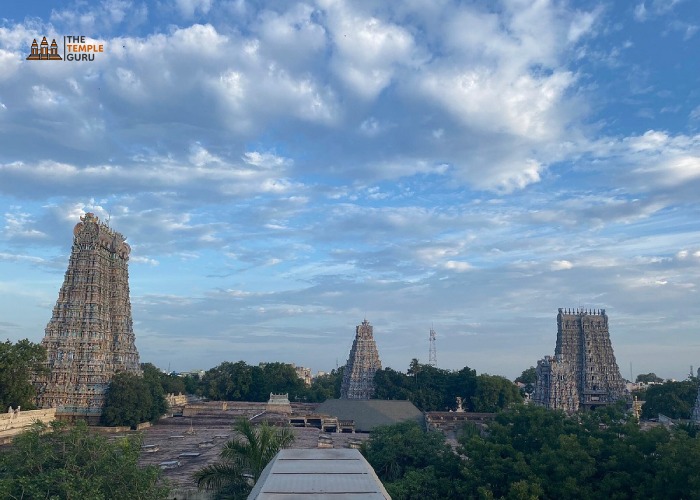
Thirumalai Nayak, who ruled Madurai from 1623 to 1655, expanded the temple once more. Many ‘Mandapams’ (pillared halls) were built during his reign. Many subsequent Nayaka rulers expanded the temple before the arrival of the British East India Company. During British rule, the temple was once again degraded and parts of it were destroyed. Tamil Hindus began the restoration work in 1959 by collecting donations and collaborating with historians and engineers. In 1995, the temple was completely restored.
Architecture of Meenakshi Amman Temple
Meenakshi Amman Temple is spread over 14 acres and is located in the heart of Madurai. The temple is surrounded by massive walls that were built in response to the invasions. When viewed from above, the entire structure resembles a mandala. A mandala is a structure constructed using the laws of symmetry and loci. The temple complex contains several shrines. Aside from the two main shrines dedicated to Sundareswarar and Meenakshi, the temple also has shrines dedicated to other deities such as Ganesha and Murugan. The goddesses Lakshmi, Rukmini, and Saraswati are also housed in the temple.

Meenakshi Amman Temple also has a holy pond known as ‘Porthamarai Kulam.’ ‘Potramarai Kulam’ translates to ‘pond with a golden lotus.’ A golden lotus structure is placed in the centre of the pond. Lord Shiva is said to have blessed this pond and declared that no marine life would grow there. In Tamil folklore, the pond is thought to be an evaluator for determining the worth of new literature.

Meenakshi Amman Temple has four main towering gateways (gopurams) that all look the same. Aside from the four ‘gopurams,’ the temple has many other ‘gopurams’ that serve as gateways to various shrines. The temple has 14 towering gateways in total. Each one is a multi-story structure that houses thousands of mythological stories as well as various sculptures.
The temple’s major ‘gopurams’ are listed below:
Sundareswarar Shrine Gopuram – This temple’s oldest ‘gopuram’ was built by Kulasekara Pandya. The ‘gopuram’ is the entrance to the Sundareswarar (Lord Shiva) shrine.
Kadaka Gopuram – This imposing gateway leads to the main shrine, which is dedicated to Goddess Meenakshi. Tumpichi Nayakkar rebuilt the gateway in the mid-16th century. The ‘gopuram’ is five stories tall.
The Chitra Gopuram, built by Maravarman Sundara Pandyan II, depicts the religious and secular essence of Hinduism.
The Nadukkattu Gopuram, also known as the ‘Idaikattu Gopuram,’ leads to the Ganesha shrine. The portal is situated directly between the two main shrines.
Mottai Gopuram – Compared to the other gateways, this ‘gopuram’ has fewer stucco images. For nearly three centuries, the ‘Mottai gopuram’ had no roof.
Nayaka Gopuram – Visvappa Nayakkar built this ‘gopuram’ around 1530. The ‘gopuram’ is eerily similar to another gateway known as the ‘Palahai Gopuram.’
The temple also has several pillared halls known as ‘Mandapams.’ Various kings and emperors built these halls, which serve as resting places for pilgrims and devotees. The following are some of the most important ‘mandapams’:
Ayirakkal Mandapam translates to ‘hall with a thousand pillars.’ Ariyanatha Mudaliar’s hall, which is supported by 985 pillars, is a sight to behold. Each pillar is magnificently sculpted and bears images of Yali, a mythological creature.
Kilikoondu Mandapam – Originally intended to house hundreds of parrots, this mandapam was built. The caged parrots were trained to say ‘Meenakshi’. The hall, which is located next to the Meenakshi shrine, features sculptures of Mahabharata characters.
Nayaka Mandapam – Chinnappa Nayakkar constructed the “Nayaka Mandapam.” A Nataraja statue is housed in the hall, which is supported by 100 pillars.
Ashta Shakthi Mandapam – This hall houses eight goddess sculptures. The hall was built by two queens and is located between the main ‘gopuram’ and the gateway leading to the Meenakshi shrine.
Facts about Kamakshi Amman Temple
- Meenakshi Amman Temple is dedicated to Goddess Meenakshi (an avatar of Goddess Parvati) and her consort Lord Sundareswarar (an avatar of Lord Shiva).
- The Meenakshi Amman Temple is a landmark of Dravidian architecture, with intricately carved gopurams (towering gateways), mandapams (pillared halls), and sculptures.
- The Meenakshi Amman Temple complex has fourteen gopurams, the tallest of which stands around 52 metres (170 feet) tall. Colourful and detailed sculptures depicting various mythological stories and deities adorn these gopurams.
- Meenakshi Amman Temple has a sacred tank known as “Porthamarai Kulam” or the Golden Lotus Tank, which is used for various rituals and religious ceremonies.
- The temple also depicts the harmonious relationship of Shaivism, Vaishnavism, and Shaktism. The Sundareswarar shrine is one of the five ‘Pancha Sabhai’ (courts) where Lord Shiva is said to have performed the cosmic dance.
- The Meenakshi Amman Temple is a religious site as well as an important part of Madurai’s cultural heritage. It draws tourists, devotees, and history buffs from all over the world to marvel at its architectural marvels and immerse themselves in its spiritual aura.
- The Meenakshi Amman Temple has a long history and has been expanded and renovated several times over the centuries. Its contribution to South India’s religious and cultural identity has earned it a special place among the country’s most revered and iconic temples.
- Meenakshi Amman Temple is a must-see holy shrine and one of the most sacred and famous pilgrimage sites.
- It is believed that anyone who takes a holy bath in the waters of this Golden Lotus pond (Porthamarai Kulam) on Amavasya (New Moon) day, the first day of the Tamil month, eclipse days, and other auspicious days and worships the Lord will be blessed with all of their desires for success.
- Every Friday at 5.30 p.m., joint prayers are held to seek the blessings of the deities for the quick recovery of patients at the Government hospital in Madurai’s emergency wards.
Famous Festivals In Temple
Millions of people visit this temple every year to celebrate all of the festivals that are held here. Some major festivals held here are
- Durga Puja. (Winter) – Devotees celebrate Navaratri at this temple in the month of Ashwin (Sep-Oct) as well as celebrate the triumph of the Goddess Durga over the buffalo demon (Mahishasura).
- Navaratri. (Summer) – They celebrate other Navaratri in the fortnight of the Chaitra (March-April). Every nine days they worship Navadurga (nine Durgas).
- Meenakshi Thirukalyanam is the most important festival associated with the temple and is celebrated in the month of Chaitra (April – May) every year.
- Mahashivratri– The great night of lord shiva.
- Avani Moola Utsavam is celebrated for 10 days during the months of August and September describing various Thiruvilayadals of Lord Shiva.
- Aside from the main festival, which is essentially the deities’ wedding ceremony, the temple hosts several other festivals. Among these are the ‘Vasantham festival,’ the ‘Unjal festival,’ the ‘Mulai-Kottu festival,’ the ‘Arudhra Dharsan festival,’ the ‘Thai Utsavam,’ the ‘Kolattam festival,’ and so on. Each of these festivals has its significance and is celebrated at different times of the year.
How to Reach Meenakshi Amman Temple
Nearest Airport: Madurai Airport, located 12 kilometres from the city, is the closest. As one of the most important airports in Tamil Nadu, it provides domestic flights to major Indian cities as well as international flights to Colombo, Sri Lanka and Dubai, UAE.
Nearest Railway Station: The nearest railway station is Madurai 2 km from the Meenakshi Amman Temple. Daily passenger train services are also maintained between Chennai and Madurai.
Bus/Cab Service: The city bus service is quite frequent and convenient to reach Meenakshi Amman Temple. Madurai has five major bus stops: Periyar Bus Stop, Anna Bus Stop, Palanganatham Bus Stop, Arapalayam Bus Stop, and Mattuthavani Bus Stop, and buses likely travel to all major cities in South India.
Also, Read – Brihadeeswara Temple Thanjavur
Support Us
If our content helps you even 1% in gaining information about the temple, please support us by contributing any amount, our UPI ID is - q417999792@ybl Or pay using QR CODE >>> Click Now
Location
Facilities
- Drinking Water
- Pooja Item Shops
- Prasad Shops
- Restaurants Nearby
- Resting Room

